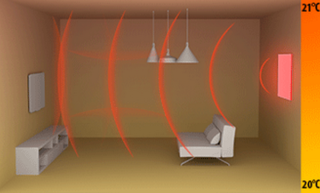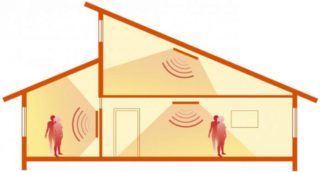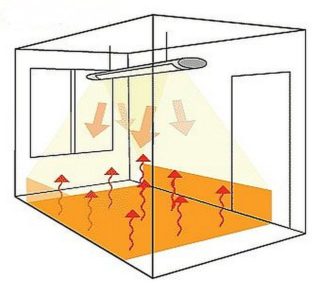Infrared heating is a modern way to increase thermal comfort in your home and apartment.
How infrared heaters work
Infrared heating transmits infrared rays to nearby objects. These can be cabinets, benches, chairs and all other elements of interior design. Infrared heating heats objects, which in turn release stored heat into the room.
Infrared heating panels are considered very user-friendly. They provide a pleasant feeling of temperature and increase the comfort of use in the interior. It is worth noting that infrared heating enhances the feeling of warmth. The perceived temperature in a heated room may be several degrees higher than the actual temperature. Thus, we reduce heating bills and at the same time we increase the comfort of using the interior.
Benefits of infrared heating
Infrared heating is receiving positive feedback from users. It is worth noting that infrared heating panels are very durable appliances. Manufacturers estimate their life expectancy at a dozen or even several decades. This makes the purchase cost a one-time purchase.
When discussing the benefits of infrared heating, health concerns are also worth mentioning. Infrared heating is often used in medicine. An additional advantage is the lack of generation of air movements. This makes the radiators suitable for people with allergies. It has even been suggested that infrared heating is one of the most beneficial indoor heating methods used by people with mite allergies.
Solution mobility and speed of action
It's also worth noting that infrared emitters come in a wide variety of build options. In the sales offers we can find both infrared wall heaters and radiators for underfloor heating.
Radiant floor heating is easy to assemble. In trade offers you will find ready-made rugs, the costs of which are not too high a financial burden.It is worth noting that infrared underfloor heating requires a suitable holder in the form of panels, wood planks or suitable tiles. Correct assembly and selection of suitable materials will make infrared heating highly comfortable to use.
Despite the advantages of an infrared floor holder, light infrared heaters designed for wall mounting or floor installation are still more popular. These are the cheapest buying solutions and the most mobile to use.
Disadvantages of infrared electric heating
Infrared heating also has its drawbacks. Using electricity can increase our monthly bills. Admittedly, infrared heating generates slightly lower costs than traditional electric heating. However, it will still be more expensive to run than a simple central heating installation.
Another limitation is the fact that infrared heating cannot heat domestic hot water. Thus, investing in infrared heaters does not mean the end of our costs. These types of problems do not arise with convective heating.











